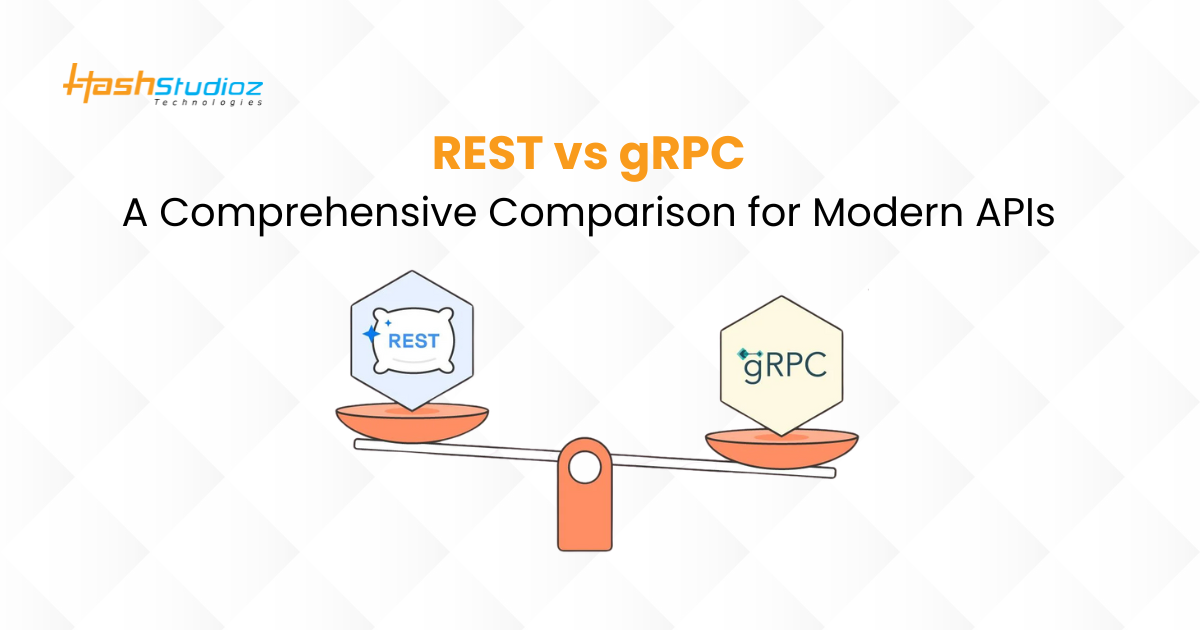In today’s API-driven world, two major technologies dominate the communication between services: gRPC and REST. Both have strengths and limitations, and the right choice depends on your project’s specific requirements.
Table of Contents
What is REST?
REST (Representational State Transfer) is an architectural style that uses standard HTTP methods (GET, POST, PUT, DELETE) to interact with resources. It’s widely used due to its simplicity and compatibility with web technologies.
Key Features:
- Uses HTTP 1.1/2
- Human-readable data (typically JSON or XML)
- Stateless architecture
- Language-agnostic
- Easy to test via browsers and tools like Postman
What is gRPC?
gRPC (Google Remote Procedure Call) is a modern, high-performance, open-source RPC framework developed by Google. It uses Protocol Buffers (Protobuf) for message serialization and HTTP/2 as its transport layer.
Key Features:
- Strongly-typed contracts using .proto files
- Binary protocol (Protobuf) — smaller, faster
- Full-duplex streaming support
- Built-in support for authentication, load balancing, and more
- Ideal for microservices and real-time systems
Similarities Between REST and gRPC
| Feature | REST | gRPC |
| Client-server comms | yes | yes |
| Stateless | yes | yes |
| Authentication | OAuth, JWT, API Keys | OAuth, TLS/SSL, Google Token Auth |
| Synchronous support | yes | yes |
gRPC vs REST: Feature-by-Feature Comparison
| Feature | REST | gRPC |
| Data Format | JSON, XML | Protobuf (binary) |
| Protocol | HTTP/1.1 | HTTP/2 |
| Speed & Performance | Slower due to text-based format | Fast and efficient (binary, streaming) |
| Streaming | Limited support | Native bidirectional streaming |
| Browser Support | Native support via fetch/ajax | Requires gRPC-Web |
| Tooling | Easy to test (Postman, curl) | Requires gRPC tools |
| Language Support | Any language that supports HTTP | Multi-language (auto-generates client code) |
| Human Readability | High (JSON) | Low (binary Protobuf) |
| Best For | Public APIs, web applications | Microservices, internal systems, real-time data |
Use Cases: When to Choose What?
Choose REST if:
- You’re building a public-facing API (e.g., for third-party developers)
- You need human-readable responses
- You want browser-native support
- Your system doesn’t require high-throughput or streaming
Choose gRPC if:
- You’re developing internal microservices
- Performance is critical (e.g., low latency)
- You need streaming (e.g., chat apps, video)
- You want schema-first development and type safety
Real-World Examples
REST API
- Public APIs (Open to External Consumers) – used in Stripe, Twitter, GitHub.
- E-Commerce Platform
- Banking App Backend
- CMS/Blog Platforms
- IoT Dashboards
gRPC
- Internal Microservices Communication (High Performance)
- Real-Time Messaging System
- Video Streaming Platform
- Gaming Backend Servers
- Telemetry and Monitoring

Final Thoughts
Both REST and gRPC have proven their worth across different domains. REST is simple, accessible, and universally compatible, making it ideal for web and external-facing APIs. On the other hand, gRPC offers high performance, code generation, and streaming capabilities that make it perfect for modern microservice architectures and internal communications.
Rather than choosing a winner, the real challenge is understanding what you need today and what you’ll need tomorrow. The best architectures often use both — REST where simplicity is key, and gRPC where performance and structure are non-negotiable.

